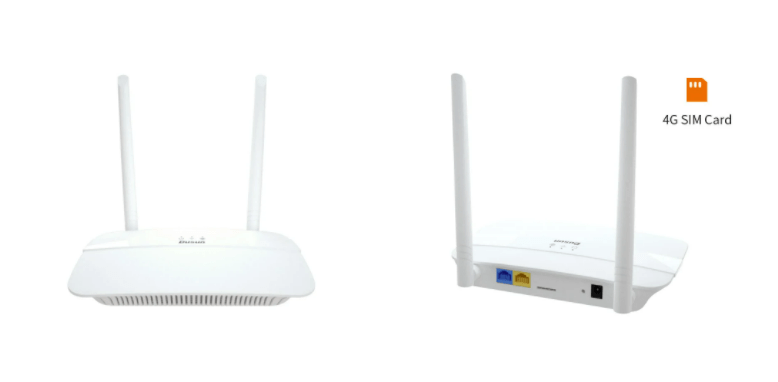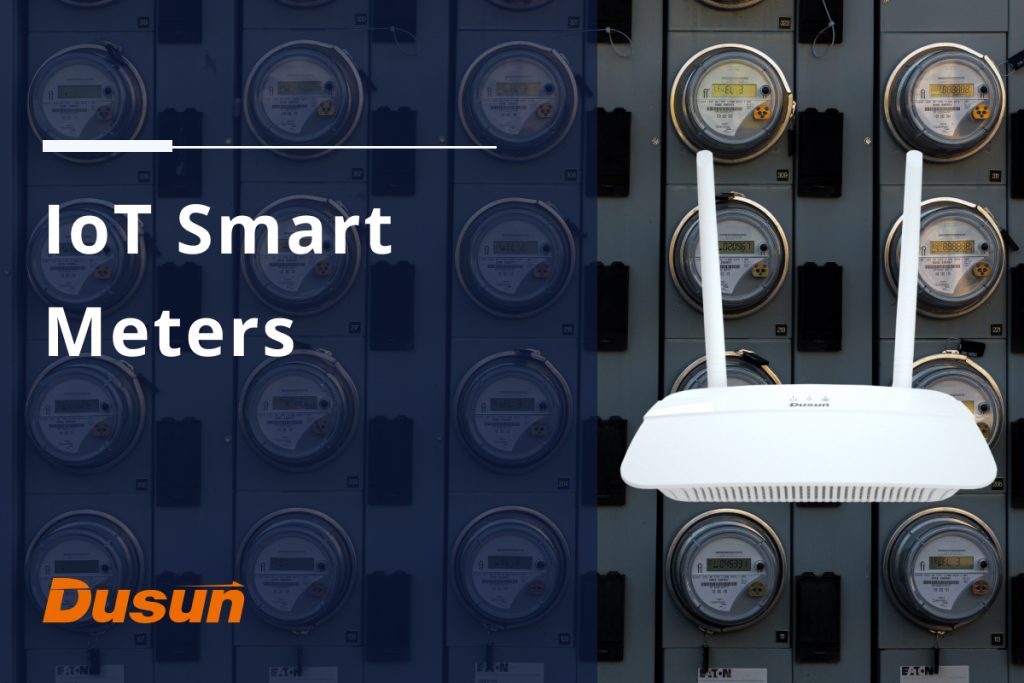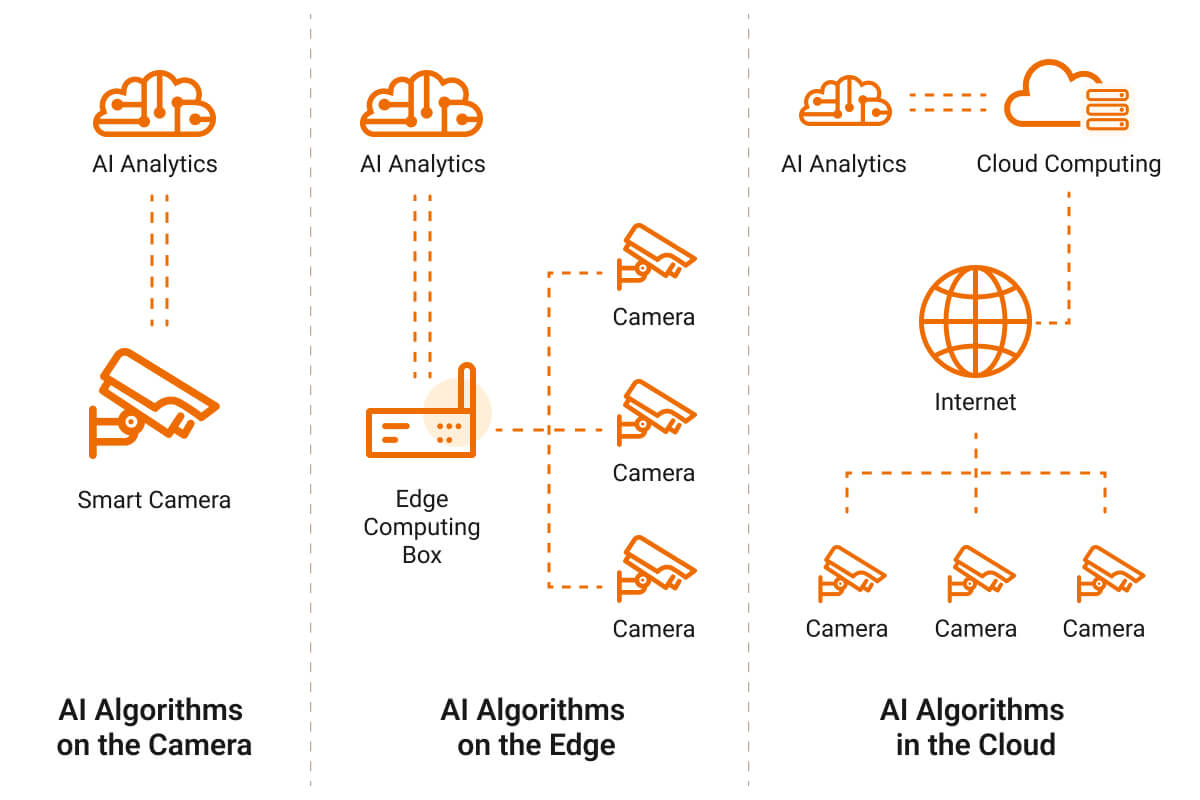IoT smart meters combine conventional energy meters with the IoT (Internet of Things) technology for real-time data collection and transmission. It has applications in various sectors, such as energy management, grid monitoring, and smart homes. Smart Meter IoT enables manufacturers to create interconnected systems that collect, analyze, and exchange real-time data.
This article explores IoT smart meters’ significance, architecture, components, and applications. It also recommends suitable communication protocols and IoT gateways to implement intelligent metering systems.
What is Smart Meter IoT?
Smart meter IoT refers to integrating smart meter technology with Internet of Things (IoT) capabilities. The smart meters have sensors, communication modules, and data processing capabilities. Smart meters with IoT capabilities can communicate with other IoT-enabled devices, such as private home automation or energy management systems, to provide real-time data and enable control or automation functionalities.
The integration of IoT capabilities into smart meters brings numerous benefits. It enables remote monitoring and control of smart meters, allowing for real-time data analysis, predictive maintenance, and improved operational efficiency. Smart meter IoT systems also facilitate the collection of valuable insights and analytics on energy consumption patterns, enabling better energy management and conservation.
Components and Architecture of Smart Meter IoT
Smart meter IoT systems have various components that enable seamless data collection, transmission, and analysis. The architecture of a typical smart meter IoT system involves the following elements:
IoT Gateway
The IoT gateway is the central hub or bridge between the smart meters and the broad IoT network. It acts as a communication gateway that enables data transmission between smart meters and the cloud or other connected devices. The IoT gateway collects data from the smart meters and facilitates its transfer to the cloud or local server for further processing and analysis. It is crucial in ensuring seamless connectivity, data security, and interoperability between the smart meters and the IoT ecosystem.
You may be interested in Revolutionary Smart Metering Gateway Changes Lives in Smart Apartment
Smart Meters
Smart meters are advanced measurement devices that replace traditional utility meters. Smart meters have several sensors and communication capabilities that enable them to measure and monitor parameters such as energy consumption, water usage, or other relevant data points.

How Do Components of IoT Smart Meters Work Together?
Here’s how smart meters and the IoT gateway work and interact to enable seamless data collection, transmission, and analysis
Data Collection: Smart meters continuously collect data on the measured parameters, such as energy consumption, at regular intervals. The data is typically stored locally within the smart meter.
Data Transmission: IoT smart meters use communication protocols such as Wi-Fi, cellular networks, or other wireless technologies to transmit the collected data to the IoT gateway. The IoT gateway bridges the smart meters and the IoT network, ensuring secure and reliable data transmission.
Data Processing and Analysis: Once the data reaches the IoT gateway, it is processed and analyzed. The gateway may perform initial data filtering or aggregation tasks to reduce the data volume before transmitting it to the cloud or local server for further analysis. Data analytics algorithms and software can then be applied to gain insights from the collected data, such as energy consumption patterns or anomalies.
Integration with IoT Ecosystem: The IoT gateway facilitates the integration of the smart meter data with other IoT-enabled devices or systems within the broader IoT ecosystem. This integration allows for enhanced functionalities and interoperability. For example, home automation systems can use smart meter data to optimize energy usage or energy management platforms to provide real-time energy insights to users.
Applications of Smart Meter IoT
Smart meters’ interconnectedness and data exchange capabilities within the IoT ecosystem offer immense potential for optimizing resource usage, enhancing operational efficiency, and creating more sustainable and intelligent systems across various industries. Here are some key areas where smart meter IoT is being utilized:
Energy Management
Smart meters enable users to monitor and optimize their energy usage patterns. It also facilitates demand response programs, where energy providers can dynamically adjust energy supply based on real-time data, optimizing energy distribution and reducing peak load.
Power Distribution and Grid Management
In the utility sector, smart meter IoT technology helps power service providers monitor and manage energy distribution networks more effectively. They can remotely monitor energy usage, detect power outages, and manage load balancing by integrating intelligent meters into the grid. Smart meter IoT provides real-time data on power quality, grid stability, and equipment performance, allowing for better grid management, improved fault detection, and more efficient maintenance and repairs.
Building Automation and Smart Homes
Smart meter IoT enables the user to monitor and control energy consumption, optimize HVAC systems, and manage appliance usage remotely. Smart meter data can generate real-time energy usage insights, enabling homeowners to make informed decisions and reduce energy waste for smart apartment.
Industrial Monitoring and Control
In industrial settings, smart meter IoT technology enables efficient monitoring and control of energy usage and production processes. By integrating smart meters into manufacturing equipment and machinery, manufacturers can collect real-time data on energy consumption, production output, and equipment performance for predictive maintenance and process optimization.
Communication Interfaces for Smart Meter IoT
Smart meter IoT systems employ various communication interfaces to facilitate data exchange between smart meters and other components within the IoT ecosystem. Here are some commonly used communication interfaces in smart meter IoT:
Wireless Communication
Wi-Fi, Bluetooth, Z-wave, and Zigbee, are commonly used wireless interfaces in smart meter IoT systems.
Cellular Networks
Cellular networks, including 2G, 3G, 4G LTE, and upcoming 5G, offer wide-area coverage and reliable connectivity for smart meter IoT deployments.
Ethernet
Ethernet interfaces enable high-speed and reliable communication between smart meters and local networks. Ethernet connections are typically used in industrial and commercial settings where fast and secure data transfer is required.
Choice of Communication Interfaces
Evaluating the specific requirements and constraints of the use case will help determine the most appropriate communication interface for the IoT smart meter deployment. Some use cases with recommended communication interfaces are given below.
Residential Energy Monitoring: A residential energy monitoring system must communicate with the homeowner’s devices and the utility company’s infrastructure. Here Wi-Fi is the most suitable choice for seamless connectivity with the homeowner’s devices, such as smartphones or tablets, enabling real-time energy monitoring and control.
Industrial Grid Monitoring: A robust and long-range communication interface like Zigbee or Z-Wave is suitable for large-scale grid monitoring applications with numerous smart meters deployed across an industrial area. These protocols provide low-power, mesh networking capabilities, allowing reliable communication between multiple smart meters and a central monitoring system.
Smart City Infrastructure: A versatile communication interface is needed to support different applications in a smart city, where various IoT devices and systems are interconnected. Cellular networks, such as LTE or 5G, offer broad coverage and high-speed data transmission. Their support for large-scale deployments makes them ideal for connecting smart meters to the city’s infrastructure and enabling remote monitoring and management.
SoC Technology in Smart Meter IoT
SoC (System-on-a-Chip) technology is essential for developing smart meter IoT systems. It enables the integration of multiple electronic components onto a single chip, resulting in compact designs and efficient operations. SoC devices offer processing power, energy efficiency, built-in communication capabilities, security features, and scalability.
They empower equipment manufacturers to create advanced smart meters that collect and analyze real-time data, optimize resource management, improve efficiency, and provide value-added services. SoC technology is crucial for the success and effectiveness of smart meter IoT solutions in various industries.
Dusun Application for Smart Meter IoT
The Dusun DSGW-021 IoT gateway is suitable for IoT smart meters. Here are some reasons for recommending this gateway:

Multiple Protocol Support: The gateway supports numerous communication interfaces such as BLE 5.2, Zigbee 3.0, Z-Wave, Matter, and Sub-G.
High-Speed Data Transfer: With up to 150 Mbps download speeds, the gateway can handle large amounts of data generated by IoT smart meters.
Stable and Efficient Connections: The gateway features two detachable LTE antennas, providing stable and efficient connections to every device.
Support for Multiple Devices: The gateway can share internet access with up to 64 Wi-Fi devices simultaneously. This scalability allows for integrating multiple IoT smart meters within a network.
Battery backup: It has a backup Li battery that lasts 12 hours. This ensures that data collection and transmission remain uninterrupted, enhancing the reliability and effectiveness of the smart metering system.
Smart Meter IoT FAQs
Integrating IoT with smart meters enables energy meter manufacturers to offer enhanced product functionality by incorporating advanced features such as real-time data monitoring, remote control, and automated billing. Additionally, IoT-enabled smart meters enable better grid management by providing real-time data on energy consumption patterns and load balancing. IoT integration empowers energy meter manufacturers to deliver advanced, intelligent, and sustainable energy management solutions to their customers.
It is possible to convert a traditional energy meter into a smart one. The process typically involves retrofitting the existing meter with additional components and technologies that enable it to collect and transmit data in real time. However, the feasibility and complexity of the conversion may vary depending on the specific meter model and its compatibility with smart metering technologies.



















